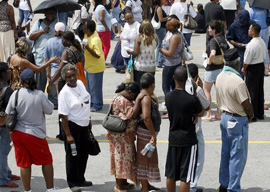
April 09, 2013

As to why so many are dropping out of the U.S. labor force, politically incorrect thoughts come to mind. Have we made idleness so appealing we are killing the work incentives of millions, and perhaps tens of millions, who would prefer not to work, if they don’t have to work?
In the 19th century, the phrase was “root, hog or die.” Raise crops, farm animals or starve. From the Jamestown colony to the 20th century, America was a self-sufficient society in which all understand St. Paul’s epistle to the Thessalonians, “He who does not work, neither shall he eat.”
During Depression days and World War II up through the 1950s, the necessities of life were provided by the individual himself or herself or by the family.
Today, however, government provides for almost all of the needs of those who claim they cannot provide for themselves.
There is the welfare program Temporary Aid for Needy Families. Medicaid pays the health care costs. Head Start, free public schools K-12, Pell grants and student loans take care of education from cradle through college.
School breakfasts, lunches and food stamps take care of feeding folks who say they cannot feed themselves. So successful are these programs that obesity is most prevalent among food stamp recipients. Then there are the unemployment checks, rent and energy subsidies and endless tax credits for taxes never paid.
The impolitic questions that arise are these:
Has the welfare state killed the work ethic for a rising share of the American people? If you can live a comfortable life with your food, shelter, health care, education and income paid for or subsidized, why work when you don’t have to?
Today, the top 1 percent of Americans in income pays 37 percent of all income taxes. The top half of wage earners pays 98 percent of all income taxes. How long can one-half of America carry the other?
With the Baby Boomers going on Social Security and Medicare at a rate of 300,000 a month, and scores or hundreds of thousands going on disability rolls and quitting the labor force every month, what kind of future are we looking at?